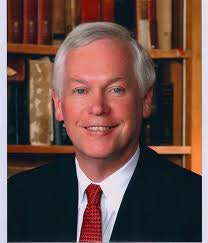
In a sense, it’s the strength and diversity of American higher education that creates its own obstacles. The student is the loser. Perhaps that’s why that, among the 82 percent of first-year community college students who state that they seek a four-year degree, only 11 percent will succeed in doing so today.
Historically, college and university presidents and their senior staffs, state and federal policymakers, and foundation leadership have looked first to the public sector whose leadership has wrestled in good faith with the dilemma of how to increase access, particularly for two-year students, to four-year public colleges and universities. To meet the challenge, public higher education leadership has generally moved in one of two ways.
The first is to apply a “big system” solution by negotiating institutional articulation agreements between affected parties. There are a number of good examples that work to provide greater access for two-year students seeking a four-year degree. However, the articulation agreement often itself becomes an impediment as rigid bureaucracy fails to translate to a clear, timely and efficient pathway for students. While we can applaud the effort, the metrics measuring success nationally fail to demonstrate the results desired.
The second is to impose state legislative mandates on public colleges and universities, sometimes tied to state funding streams. Some efforts to establish state policies, notably in places like Tennessee, show considerable promise. In many places, however, they can become a policy based on well-intentioned principles that lack the financial teeth to withstand a change in state leadership or the next economic recession. It’s hard to impose change from the top down.
It’s particularly telling that America’s independent colleges and universities are often left on the sidelines. These colleges—often smaller and deeply ingrained into the educational and cultural fabric of their communities—should be a natural place to test new ideas. They can work together to generate innovation at the state and regional levels that can be scaled nationally. Importantly, they bring one critical card to the poker game: their focus on the students. It is precisely this focus that provides the ongoing mentorship that leads to higher persistence and graduation rates.
Maybe this is where politicians, policy makers and foundation leadership should begin. Perhaps the most critical questions about how to open access to a four-year degree are: What is it that the independent colleges do that makes students persist and graduate at higher rates? What can we learn from them?
Last weekend, a distinguished group of higher education leaders from public and independent colleges and universities, policy institutes and higher education research centers, foundations, the national higher education associations and the nonprofit community met near Washington, D.C., to discuss the issue. The Council of Independent Colleges, representing more than 600 independent colleges and universities that educate 1.3 million students, sponsored this gathering. Funded by the Kresge Foundation, the agenda focused on how independent colleges and universities might increase the number of four-year graduates.
CIC’s president, Richard Ekman, noted that independent colleges and universities play an important role in providing greater access to community college students seeking a four-year degree. He suggested that “they can lead the way not only through collaboration but also by looking at the most innovative and flexible ways to scale a national program by supporting best practices across state lines and encouraging programs that have been tested successfully or show great promise.”
Mr. Ekman also reiterated that independent colleges and universities make almost $19 billion in institutional aid available annually—a percentage of which allows transfer students critical access to a four-year degree—giving CIC’s institutions an important voice at the table.
The CIC conference highlighted important first steps in looking beyond heavily bureaucratic articulation solutions and state-mandated pathways. Participants called for better-defined research to get the right questions answered to permit development of an inventory of best practices. A number advocated for a stronger voice in state and federal policy making on access. Others argued for print and social media campaigns that raised the awareness of the American public on the need to create a clear pathway to a four-year degree for two-year students.
CIC will likely take the suggestions forward to its board for early consideration.
There’s much to applaud here. CIC brought together a kind of “coalition of the willing” but what became clear is that even the practitioners, planners and funders were often talking past one another. By the end of the conference, the need for collaboration that “connects the dots” to grow best practices in a national scale-up dominated the agenda. The meeting demonstrated what could be done quickly to improve access within higher education when ideas, principles, practices, ambition, and good intentions intersected.
And perhaps most encouraging of all—the focus was always about how best to serve the students.
![Screenshot 2024 06 05 141719[91541]](https://img.diverseeducation.com/files/base/diverse/all/image/2024/06/Screenshot_2024_06_05_141719_91541_.66613a2803b85.png?auto=format%2Ccompress&fit=crop&h=107&q=70&w=160)




![Screenshot 2024 06 05 141719[91541]](https://img.diverseeducation.com/files/base/diverse/all/image/2024/06/Screenshot_2024_06_05_141719_91541_.66613a2803b85.png?auto=format%2Ccompress&fit=crop&h=167&q=70&w=250)












